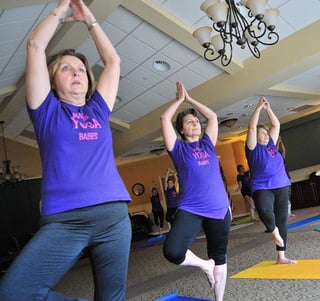
Brain Fitness for Seniors - How to Exercise Your Most Important Muscle
Updated from the original publication on March 22, 2016.
 Ponder the phrase "use it or lose it" the next time you spend hours in front of the television set or ask someone else to "think" for you. Then consider that two-pound enigma nestled safely within the confines of your skull. Right now, billions of neurons are behaving like hyperactive toddlers in your brain, constantly communicating and making new connections with other neurons via electrochemical signals.
Ponder the phrase "use it or lose it" the next time you spend hours in front of the television set or ask someone else to "think" for you. Then consider that two-pound enigma nestled safely within the confines of your skull. Right now, billions of neurons are behaving like hyperactive toddlers in your brain, constantly communicating and making new connections with other neurons via electrochemical signals.
You're probably wondering what these restless brain cells are saying to each other. Well, neuroscientists know exactly what they are saying--
We want something to do!
Although a bored toddler may channel their frustration into doing things they shouldn't, neglected brain cells tend to stop talking to each other. Without external stimulation keeping them healthy and active, neurons will just sit there and do nothing. No more new connections with other neurons, no growth, no nothing. Just like muscles that aren't moved or exercised for lengthy periods will atrophy and become useless, so will your brain.
Why Brain Fitness is so Important for Seniors
Seniors especially need to engage in brain fitness exercises to stimulate the "thinking" part of their brain--the frontal lobe. Necessary for maintaining cognitive skills, memory, judgment, problem solving and motor functioning, your frontal lobe could be considered the "cockpit" of your brain. Imagine an airplane without a cockpit--it couldn't fly or taxi down the runway. In fact, it couldn't do anything except take up space!
So let's get started pumping up that muscle in your head with these brain fitness programs designed especially for seniors:
1. Physical Activity
 Exercise improves functioning of the hippocampus (working memory and long-term memory). Research indicates that exercising regularly may help prevent or delay Alzheimer's disease. Exercise also promotes positive feelings by stimulating the release of endorphins, or special chemicals containing analgesic/mood enhancing properties. A happy brain is a healthy brain!
Exercise improves functioning of the hippocampus (working memory and long-term memory). Research indicates that exercising regularly may help prevent or delay Alzheimer's disease. Exercise also promotes positive feelings by stimulating the release of endorphins, or special chemicals containing analgesic/mood enhancing properties. A happy brain is a healthy brain!
(Try these fun exercises for seniors)
2. Artistic Endeavors
Join an oil painting, sculpturing or sketching class at your local arts center. Or just channel your inner muse at home. Either way, drawing or painting stimulates both brain hemispheres--the logical and the creative parts of your brain. Holding a pencil or brush in your hand is also a good way to strengthen your fine motor skills and regulate hand and finger movements.
3. Learn a Second Language
One of the best ways to exercise your brain is by learning another language. Just learning commonly used phrases in a second language utilized neurons vital for relaying messages throughout the brain. Learning another language also promotes higher-order operations, such as organizing, memorizing and expressing ideas.
4. Puzzles, Puzzles, Puzzles
Jigsaw puzzles (at least 500 pieces), crossword puzzles and word search puzzles provides the kind of "brain food" neurons love to feast on. Doing puzzles also improves focus, concentration and memory skills in seniors.
5. Readin', Writin' and 'Rithmetic
Reading, writing in a journal and doing math problems are great ways to build your brain muscle. You can find free books to read online here or brush up on your math skills here.
6. Online Brain Fitness Games for Seniors
These online games are designed to help stimulate the frontal lobe, and will challenge you while working out your brain:
For more information about brain fitness activities for seniors, call us today at Presbyterian Senior Living, serving Pennsylvania, Maryland, Delaware, and southeastern Ohio seniors and their caregivers.
About Presbyterian Senior Living
As the trusted leader in aging services, Presbyterian Senior Living combines over 97 years of experience with innovative approaches to senior communities and services. Across our 27 communities in PA, MD, OH, and DE, we serve over 6,000 seniors. We are committed to: FOSTERING teamwork and responsibility. UPHOLDING integrity in every action. EMBRACING innovation to create opportunities for everyone’s success. LEADING with compassion and respect.


![[eBook] Discover how a Continuing Care Retirement Community can enrich your life!](https://no-cache.hubspot.com/cta/default/388539/a40a4bbc-c921-4427-b6bb-ba2e7e64f446.png)
